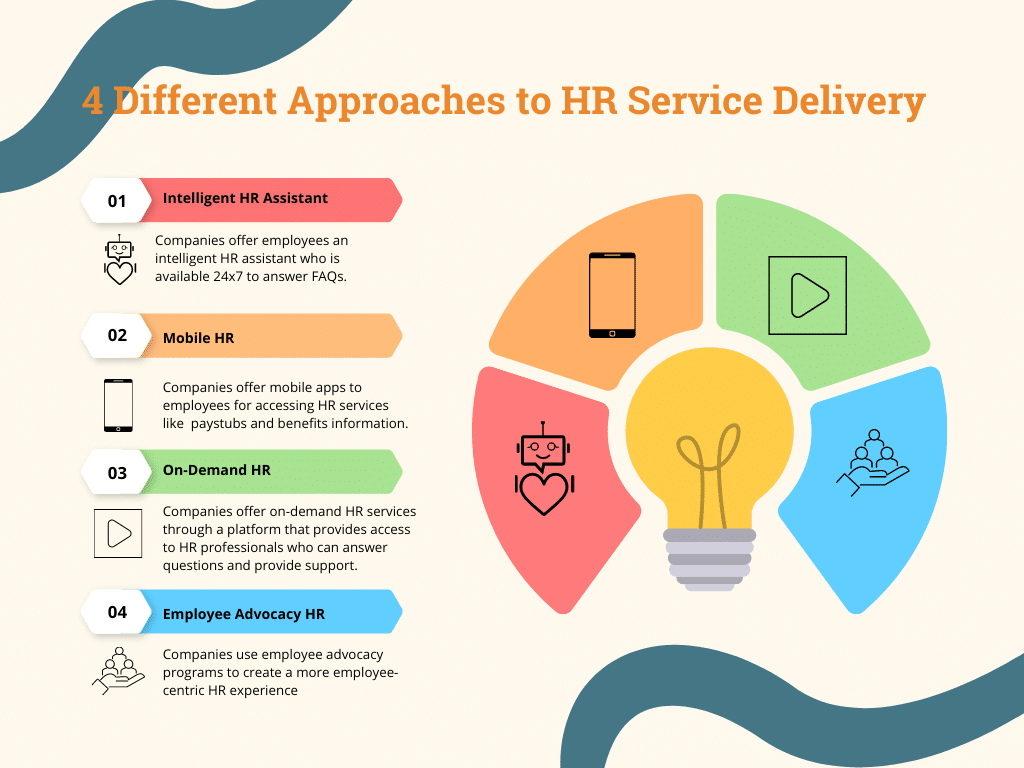As an HR leader, digital workplace assistants are a natural Employee Service Delivery experience. Many organizations have some type of company Intranet (like Confluence, Notion, or SharePoint pages) to share facilities, IT, and HR information with employees.
The Facilities and IT pages will often have a link to an employee self-service portal, in which employees can submit requests to generate a service ticket. In enterprise organizations, you will often find a Global Employee Services Center where employees can call or email with HR-specific requests. Sometimes, the call or service center is maintained internally, or it may be managed by an external outsourced provider.
However, as our workforce needs have become more dynamic and complex, these solutions often become weighted down and are not able to scale with the companies’ growth. Employees are also seeking workplace culture in which meaningful connections and well-being are prioritized. Thus, launching a digital assistant is a natural next step in evolving your employee services model.
Why Digital Workplace Assistants Are Needed?
“23% of companies who are already using AI-powered technology, were doing so in their HR department”
SOURCE: SelectSoftware Reviews
Companies that launch a digital AI assistant are simply bringing their current employee service delivery model into 2023. Digital workplace assistants provide employees with quick access to location-appropriate information and resources 24/7. Digital assistants integrate into the company’s centralized communication platform (such as Slack or Microsoft Teams) and create a central hub for employee support. In a growing hybrid workplace, digital assistants provide employees with consistent and compliant information regardless of location. Workplaces that use digital assistants can creatively interact with their employees in a meaningful way to increase engagement.
3 Ways To Leverage AI Intelligent Assistants Beyond Employee Q&A.
The most common use case for launching a Digital Workplace Assistant is to automate Tier 0 and 1 employee support for IT, Facilities, HR, and payroll. Workplace data shows that a digital assistant can answer 80% of Tier 0 to 1 employee questions (source: https://www.inbenta.com/en/blog/hr-service-automation/).
Often, these assistants can obtain feedback from the employee on the quality of their experience, replacing the traditional transactional model. Employee support teams can use this data to improve their knowledge and understand employees’ concerns. Additionally, employee support teams are more likely to free up valuable time, gaining increased capacity to support the strategic business initiatives that drive revenue growth.
First, Consistent Employee Communications.
Workplaces use digital assistants to streamline and tailor employee communications. The digital assistant enables employee support teams to send important reminders and information to the appropriate employee communications channels.
For example, HR can send location-specific benefit announcements to their global workforce during their open enrollment for employee benefits process. HR can add a direct hyperlink to help employees navigate to the appropriate benefits platform. If there is a specific segment of employees that needs to submit their billable time or hours worked during a pay period, Payroll can automate scheduled deadline reminders for time and attendance related entries to specific systems of record. Facilities team members are also direct emergency alert or inclement weather messages to specific office locations, using specific location based distribution lists or Slack channels. MeBeBot’s customer e2open used Push Messaging with MeBeBot’s digital assistant in Teams to support their employees in Florida during the hurricane in Ft. Meyers. While power may have been lost, employees still received messages in Teams via their cellular phones.
Second, Automated Pulse-Check Surveys.
Digital assistants can send automated scheduled surveys to gather feedback from employees on a variety of interest areas. For example, following company meetings, a Pulse Survey can be sent to obtain employee data on the quality of the meeting and its impact on each employee. HR can send surveys to specific channels to gauge preferences for an event (or after a specific group activity) to gather information on improvements to make for the next event. Facilities teams use Pulse Surveys for workplace safety needs and scheduling and IT teams use surveys to verify system improvements or accuracies of instructions for new solutions.
Third, Continuous Manager Development Training.
Companies can augment their manager development training with the help of an assistant. The company could send nudges with links to additional training resources for various training topics or courses. Pulse surveys gather feedback from managers as to what kinds of help they may need so that HR can incorporate their input to enhance their program.
Companies are able to centralize onboarding information using a digital assistant. They support not only onboarding external hires, but also internal employees onboarding into a new role. For example, as employees are moving into a people manager role, they could access the same information to learn more about the responsibilities required for this position.
Different Approaches to HR Service Delivery.
In addition to Digital Assistants, companies are using other approaches to improve their HR service delivery.
- Mobile HR – Companies offer mobile apps to employees for accessing HR services, such as checking paystubs and benefits information.
- On-demand HR – Companies offer on-demand HR services through a platform that provides access to HR professionals who can answer questions and provide support.
- Employee Advocacy HR: Companies use employee advocacy programs to create a more employee-centric HR experience by empowering employees to share HR-related feedback and suggestions.

The Future of Digital Workplace Assistants for Employee Experience
As digital assistants become more intelligent, they will become the central hub or the company’s digital front door, where the employee experience starts. They will play a significant role in how employees interact with the company and its systems. Digital assistants will replace single Sign On Dashboards and Portals. Instead, when employees access the digital assistant, they will ask the assistant questions to help them navigate to the appropriate tools needed to complete their work tasks.
Digital assistants will provide employees with a way to interact with their workplace intuitively. Employees will be free to focus on purposeful and “value-add” work that directly impacts company revenue. Also, digital assistants will provide employees with the platform to have a voice and feel heard as their feedback drives direct workplace change. Change and uncertainty have become a part of our shared human experience. Digital assistants will enable us to build and maintain the necessary resiliency companies need to thrive now and beyond.

